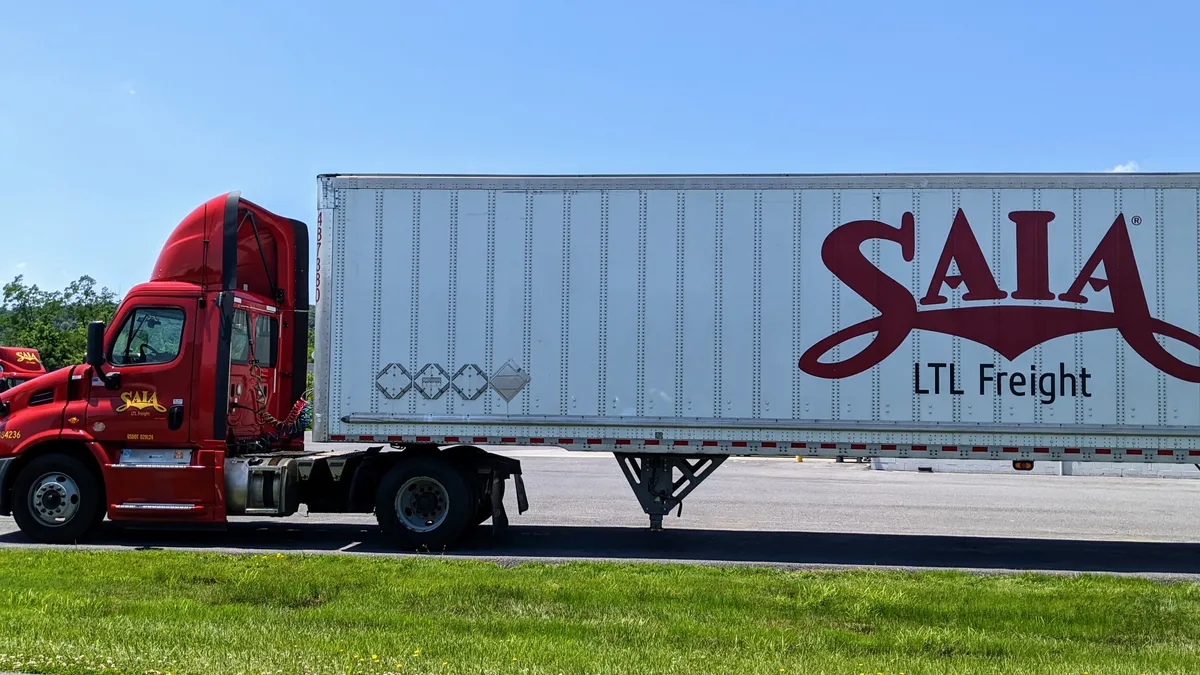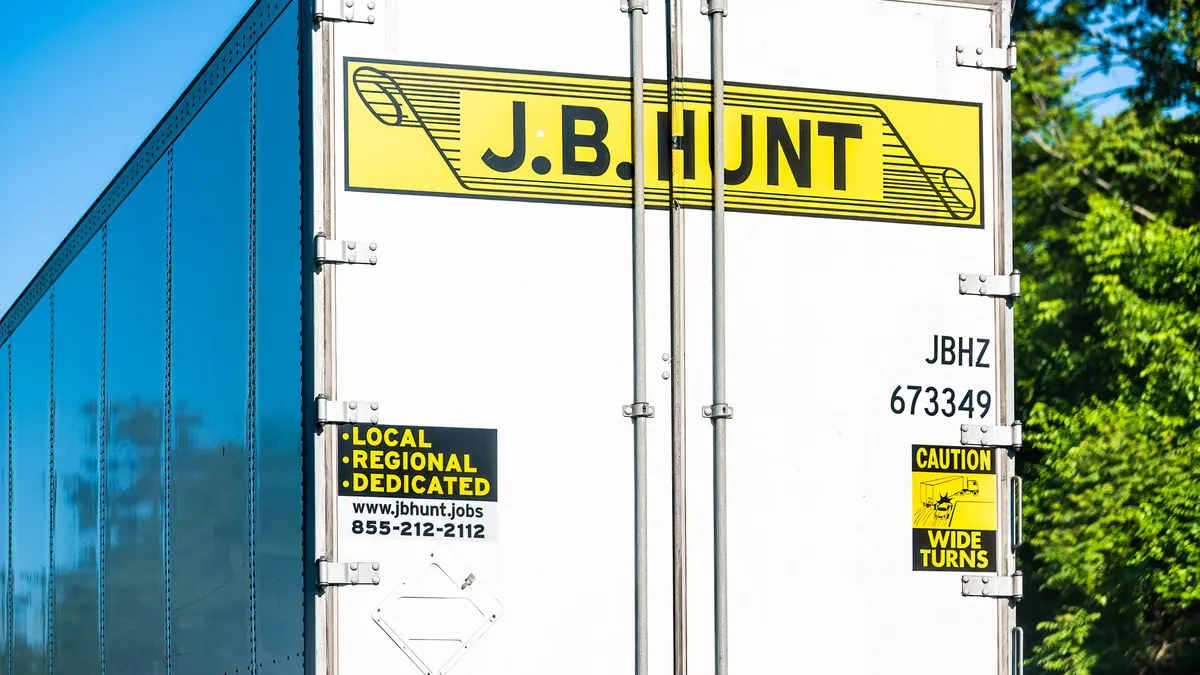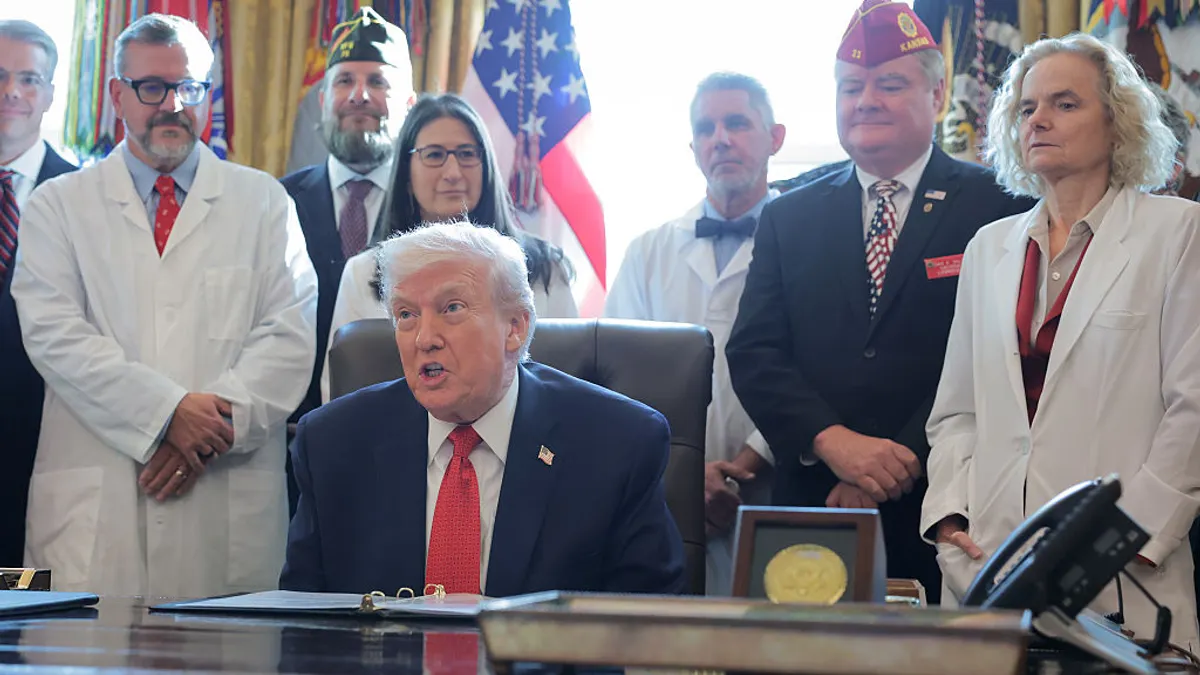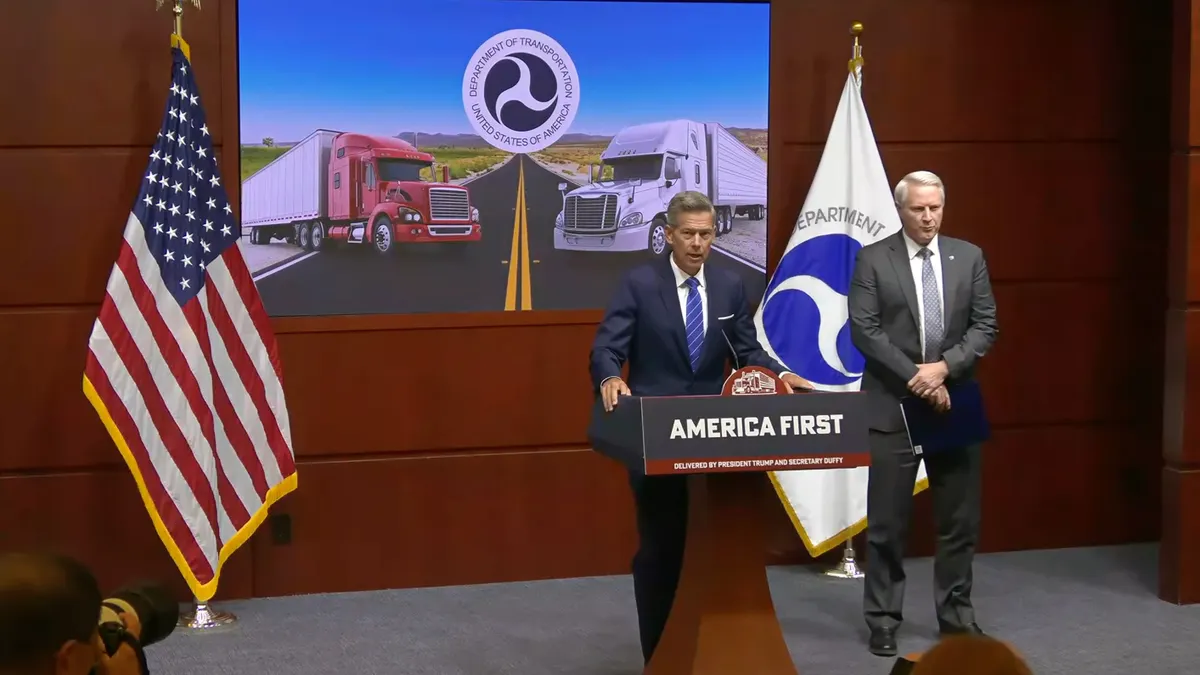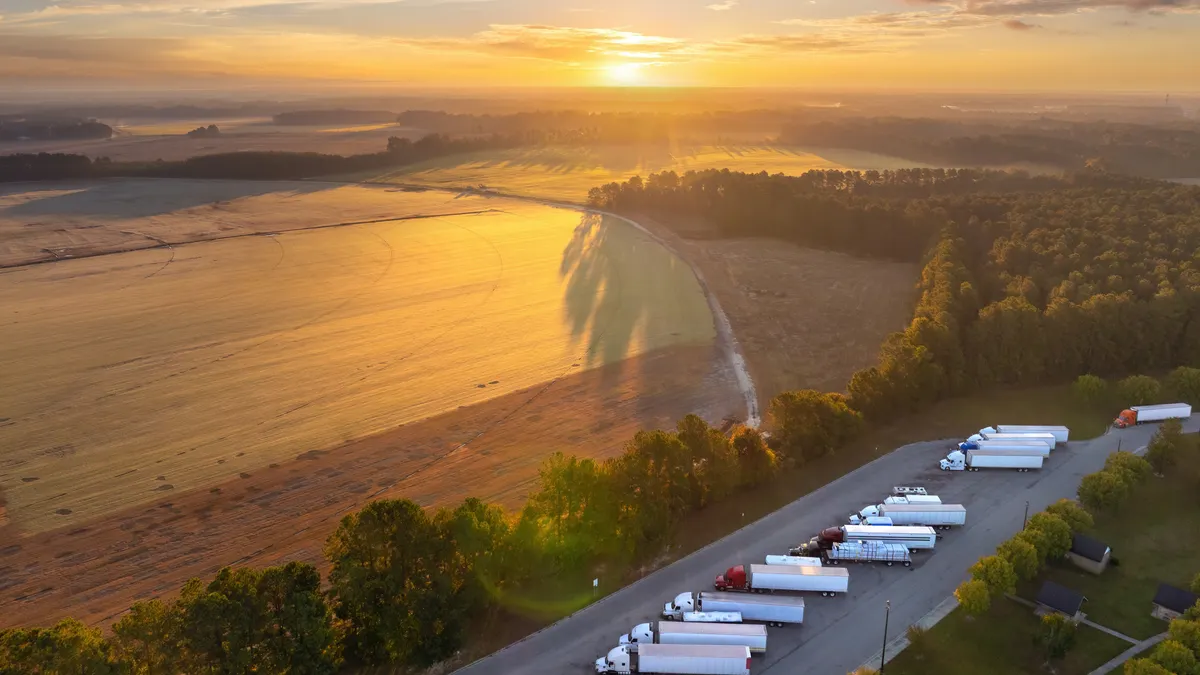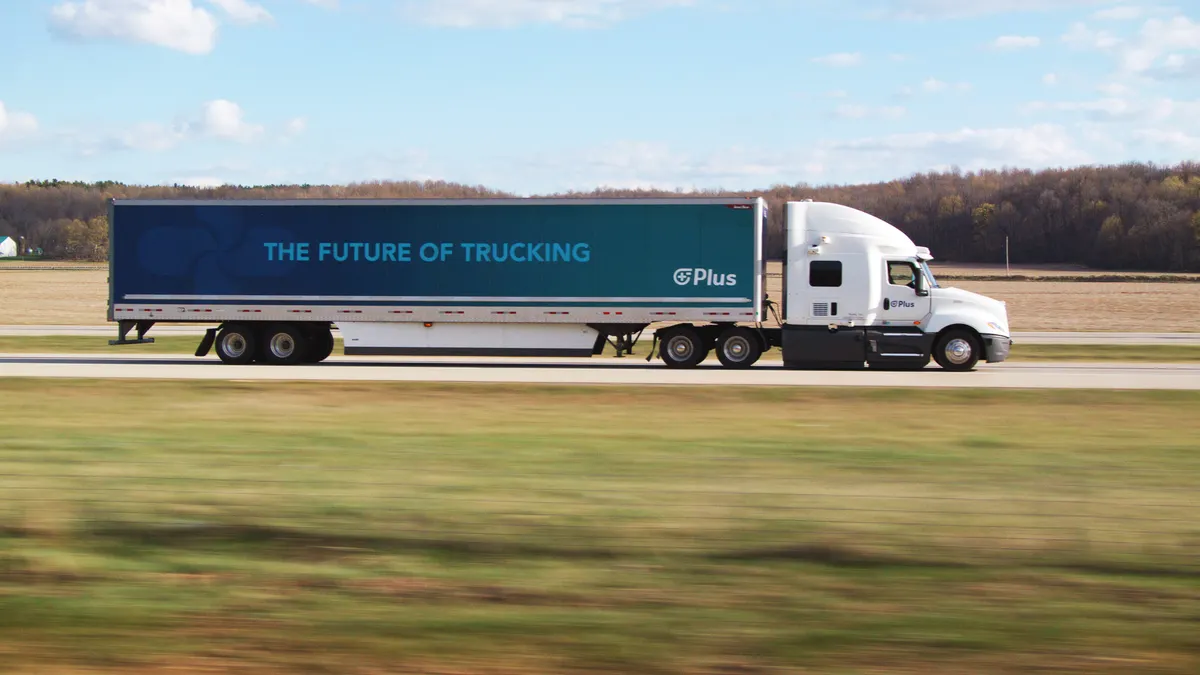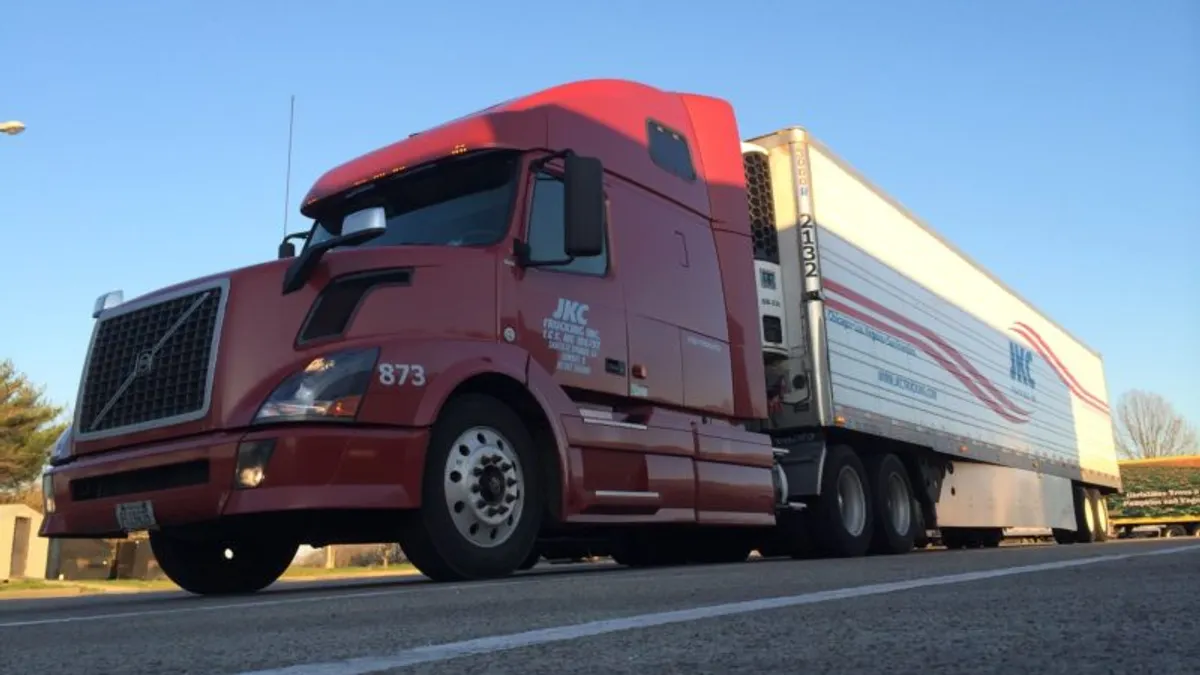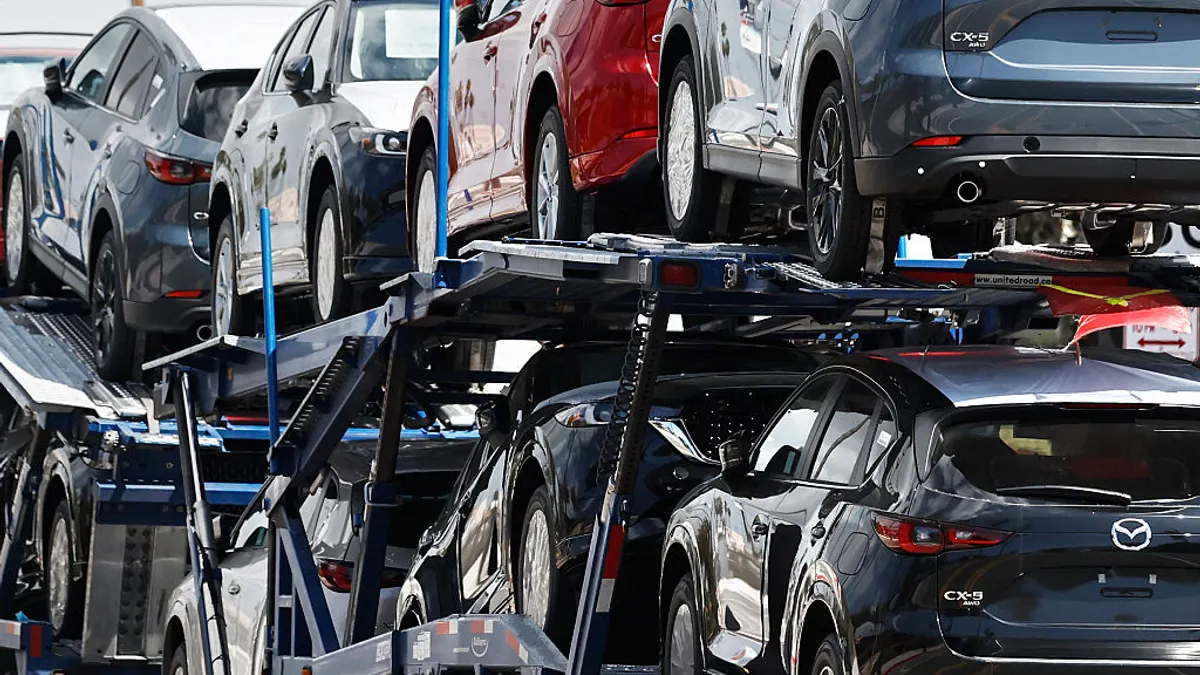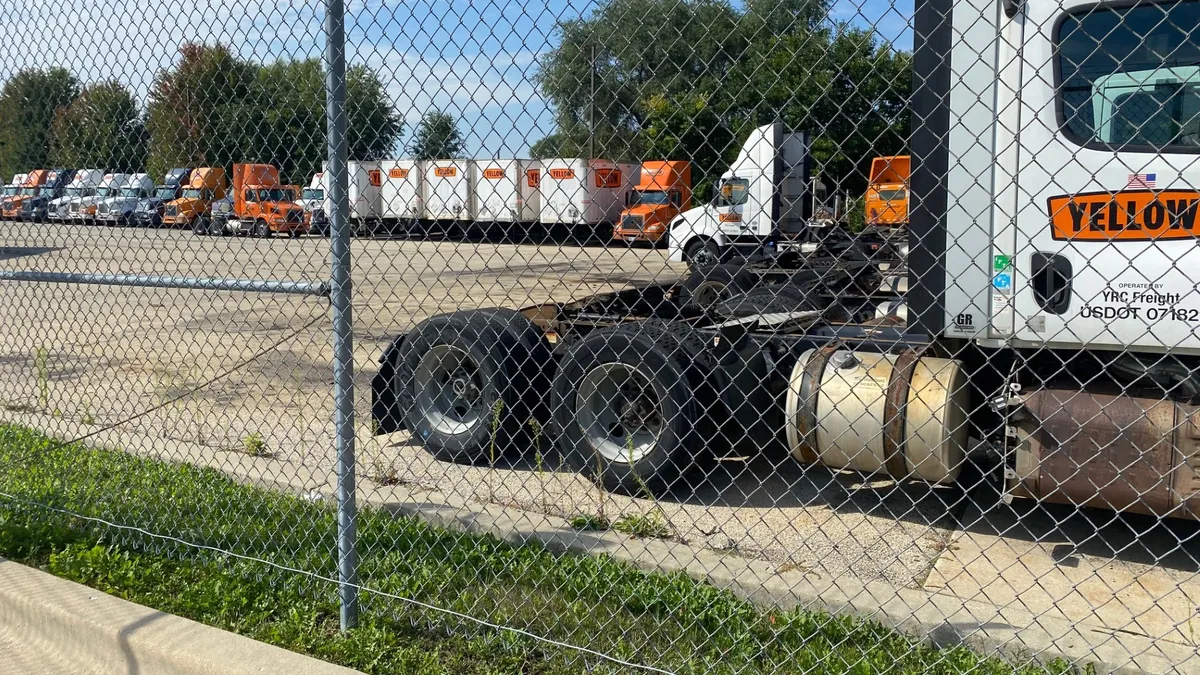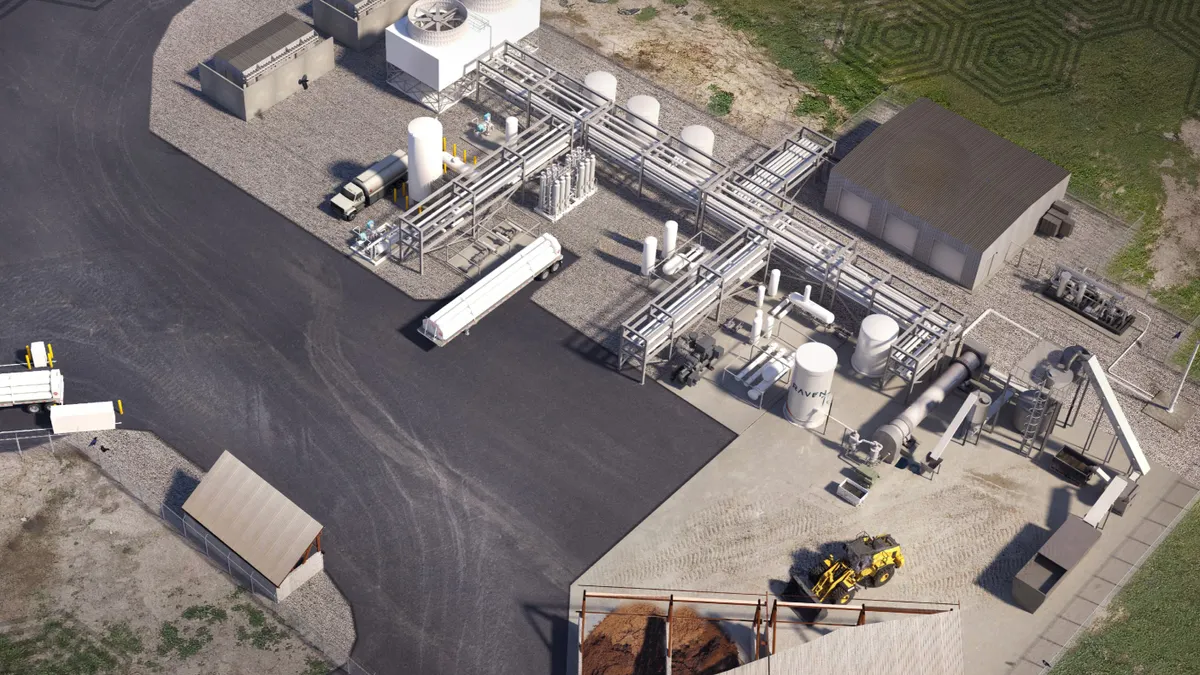The Environmental Protection Agency released new emissions rules for truck manufacturers Friday, calling the standards the strongest measures ever issued.
The greenhouse gas emissions standards for heavy-duty vehicles, phase three, affect model years 2027 through 2032 and are meant to reduce pollution.
“For tractors such as day cabs and sleeper cabs on tractor-trailer trucks, the Phase 3 standards vary according to vehicle type and range up to 40% more stringent than the previous Phase 2 standards for MY 2032,” the agency said in an email to Trucking Dive.
For heavy-duty vocational vehicles such as delivery trucks, refuse haulers, public utility trucks, the new standards range up to 60% more stringent than the previous standards for model year 2032, the agency said.
The new standards will mean cleaner air and healthier communities, especially in corridors where there’s denser truck traffic, proponents said.
The rule also means fleets will save “money through reduced fuel and maintenance costs,” EPA Administrator Michael Regan said on a press call Thursday.
Regulatory officials said the standards allow flexibility for manufacturers to pursue technologies that work best for them.
The final rule slows down the timing of the regulatory rollout compared to an initial unveiling. While the agency will track progress of OEMs and developing infrastructure needed to support the program, regulations could undergo further changes based on feedback from the public.
“EPA will consult with a wide range of stakeholders on an ongoing basis to learn from their experiences and gather relevant information and data,” the agency said in a news release, adding that stakeholders will include trucking fleets, trucking trade associations, owner-operators; heavy-duty vehicle manufacturers, environmental and public health groups, and more.
Nearly a year ago, the agency released a proposed rule that called for OEMs to have increasingly higher amounts of zero-emission vehicles built. The agency sought that phased-in approach to address potential lead time concerns over the feasibility of ramping up the newer technology, the proposed rule said.
Still, groups such as the American Trucking Associations voiced concerns with the proposal, saying trucks vary too much to be confined to one of three categories consisting of vocational, shorthaul tractors and longhaul tractors. Industry leaders also asked for achievable timelines.
The final rule remained deeply flawed in ATA’s view. “ATA opposes this rule in its current form because the post-2030 targets remain entirely unachievable given the current state of zero-emission technology, the lack of charging infrastructure and restrictions on the power grid,” President and CEO Chris Spear said in a statement.
“Given the wide range of operations required of our industry to keep the economy running, a successful emission regulation must be technology neutral and cannot be one-size-fits-all,” he said.
Concerns inundated the rulemaking, part of over 175,000 comments, highlighting issues including the still developing charging infrastructure.
“PACCAR is working diligently to develop ZEVs for the future, but the necessary supporting infrastructure must be in place before widespread ZEV market penetration and adoption,” the manufacturer said in rulemaking comments last year.
At the same time, OEMs have reported aggressive timelines themselves. The government acknowledged Navistar’s ZEV sales volume goal was 50% by 2030, a rate that Volvo Trucks projected to exceed.
Meanwhile, the policy relies on buy-in from businesses for the newer models. Owner-Operator Independent Drivers Association President Todd Spencer noted concerns with costs and said agency rulemaking can lead drivers to remain with older trucks.
“Clean air is a priority for everyone, including the trucking industry, but emissions requirements for heavy-duty trucks should be practical, affordable, and reliable,” Spencer said in written comments last year.
Vehicle costs alone for the trucks with newer technologies are two to three times compared to a diesel truck, per the Clean Freight Coalition, which includes the ATA and other industry groups such as the Truckload Carriers Association. "For example, today’s diesel class 8 truck costs roughly $180,000 compared to an electric truck’s price tag of $400,000," the coalition’s executive director said.
While newer model year 2032 vehicles would have higher up-front costs, based on incentives, lower maintenance costs and other factors, the EPA projects the overall payback period — meaning the time it takes to recoup costs of ZEVs — to be as few as two years for light heavy-duty vocational vehicles as well as day cab tractors and as much as five years for sleeper cab tractors.




